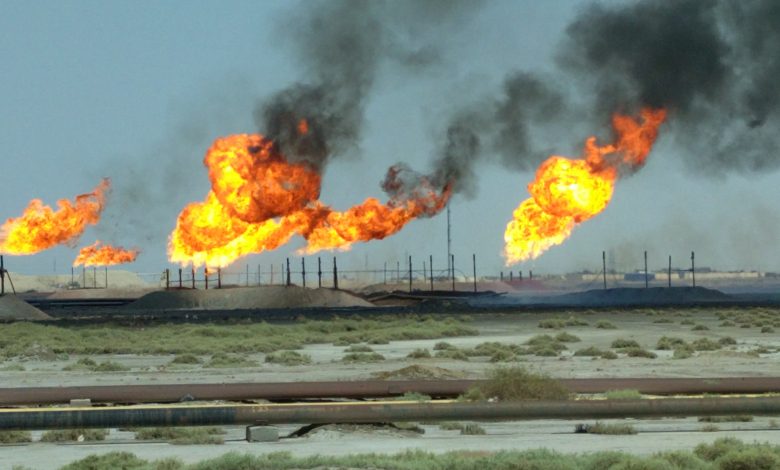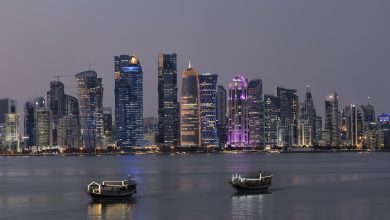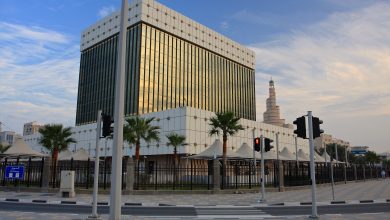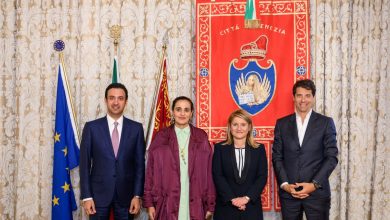
QP Joins World Bank in Global Fight Against Routine Flaring
قطر للبترول تنضم إلى البنك الدولي في جهوده العالمية لمكافحة الحرق الروتيني للغاز
QNA
Doha: Qatar Petroleum announced that it has joined the World Bank-led Global Gas Flaring Reduction Partnership (GGFR) Multi-Donor Trust Fund, as part of its commitment to stronger collaborations in the global effort to reduce flaring or burning of natural gas associated with oil/gas exploration, production and processing operations.
By committing to the World Bank’s “Zero Routine Flaring by 2030” initiative, QP is supporting the global effort to end the industry practice of routinely flaring associated gas during oil production, a necessary goal if the world is to keep a global temperature rise this century well below 2 degrees Celsius above pre-industrial levels.
This announcement comes in accordance with, and commitment to, Qatar Petroleum’s recently announced Sustainability Strategy, which acts as a clear direction towards reducing the emissions intensity of Qatar’s LNG facilities by 25 percent and of its upstream facilities by at least 15 percent, and reducing flare intensity across upstream facilities by more than 75 percent. Qatar Petroleums Sustainability Strategy also sets out a target to eliminate routine flaring by 2030, and limit fugitive methane emissions along the gas value chain by setting a methane intensity target of 0.2 percent across all facilities by 2025.
As Qatar Petroleum works towards achieving this goal, Qatar Petroleums upstream assets continue to reduce flaring. In 2019, Qatar Petroleum achieved 68 percent reduction compared to 2012 when Qatar Petroleum first started its Flare reduction program. The ongoing flare reduction initiative has further contributed to a 7.5 percent reduction in GHG emissions in 2019 and Qatar Petroleum achieved a 72 percent reduction in methane emissions from flaring compared to the same period, from 2012.
Launched in August 2002 at the World Summit on Sustainable Development, the GGFR is a public-private partnership of governments, companies, and multilateral organizations working to end routine gas flaring at oil production sites across the world.
The Partnership helps identify solutions to the many technical and regulatory barriers to flaring reduction by developing country-specific flaring reduction programs, conducting research, sharing best practices, raising awareness, increasing the global commitments to end routine flaring, and advancing flare measurements and reporting. Ending poverty and boosting shared prosperity is also an integral part of GGFR’s strategy.
قنا
الدوحة: أعلنت قطر للبترول عن انضمامها إلى صندوق المانحين للشراكة العالمية للحد من حرق الغاز (GGFR) التي يقودها البنك الدولي، وذلك كجزء من التزامها بتعزيز التعاون في الجهود العالمية للحد من حرق الغاز الطبيعي المرتبط بعمليات استكشاف وإنتاج ومعالجة النفط والغاز.
وبالتزامها بمبادرة البنك الدولي “صفر حرق روتيني بحلول عام 2030″، تدعم قطر للبترول الجهود العالمية لإنهاء ممارسات الحرق الروتيني للغاز المصاحب أثناء إنتاج النفط، وهو هدف عالمي ضروري لإبقاء ارتفاع درجة الحرارة العالمية لهذا القرن عند أقل بكثير من درجتين مئويتين فوق مستويات ما قبل الثورة الصناعية.
ويشكل قرار قطر للبترول توافقا والتزاما مع استراتيجية الاستدامة التي تم الإعلان عنها مؤخرا والتي تشكل توجها واضحا نحو خفض كثافة الانبعاثات من مرافق الغاز الطبيعي المسال في قطر بنسبة 25 بالمئة ومن منشآت التنقيب والإنتاج بنسبة 15 بالمئة على الأقل، وتقليل نسب حرق الغاز من جميع مرافق التنقيب والانتاج بأكثر من 75 بالمئة.. كما تسعى استراتيجية قطر للبترول للاستدامة لوقف الحرق الروتيني للغاز بحلول العام 2030، والحد من انبعاثات غاز الميثان المتسربة على طول سلسلة إنتاج الغاز من خلال تحديد نسبة 0.2 بالمئة كهدف لشدة تسرب غاز الميثان من جميع المرافق بحلول العام 2025.
بينما تعمل قطر للبترول على تحقيق هذا الهدف، تستمر أعمال قطر للبترول في الاستكشاف والتنقيب بالحد من حرق الغاز. ففي عام 2019، حققت قطر للبترول انخفاضا بلغت نسبته 68 بالمئة مقارنة بعام 2012 عندما بدأت بتنفيذ برنامج الحد من حرق الغاز.. وقد ساهمت المبادرات المستمرة لقطر للبترول للحد من حرق الغاز في خفض انبعاثات الغازات المسببة للاحتباس الحراري بنسبة 7.5 بالمئة في عام 2019، بالإضافة الى تحقيق انخفاض في انبعاثات غاز الميثان الناتجة عن الاحتراق بنسبة 72 بالمئة مقارنة بالفترة نفسها من عام 2012.
وكانت الشراكة العالمية للحد من حرق الغاز قد أطلقت خلال القمة العالمية للتنمية المستدامة في أغسطس عام 2002، وهي شراكة بين القطاعين العام والخاص تتضمن الحكومات والشركات والمنظمات متعددة الأطراف التي تعمل على إنهاء حرق الغاز الروتيني في مواقع إنتاج النفط في جميع أنحاء العالم. وتساعد هذه الشراكة في وضع الحلول للعديد من المعوقات التقنية والتنظيمية التي تقف حائلا أمام الحد من الاحتراق من خلال تطوير برامج خاصة بخفضه، وإجراء البحوث، ومشاركة أفضل الممارسات، وزيادة الوعي، وتحقيق المزيد من الالتزامات العالمية لإنهاء الحرق الروتيني، وتعزيز قياسات الحرق وإعداد التقارير. ويعد إنهاء الفقر وتعزيز الرخاء المشترك جزءا لا يتجزأ من استراتيجية هذه الشراكة العالمية.



